Dialing Modes
A dialer refers to a core feature and its associated functions used by Call and Contact Center software to initiate calls. In VCC Live, the way the dialer initiates calls is determined by four dialing modes: Manual, Power, Predictive, and Outbound IVR.
Table of Contents
- Understanding the Concept of Dialing Modes
- Manual Dialer
- Power Dialer
- Power Dialer — Settings Overview
- Predictive Dialer
- Predictive Dialer Submodes
- Predictive Dialer — Settings Overview
- Outbound IVR
- Outbound IVR — Settings Overview
- About the Dialing Mechanism
- Dialing List Order
- Dialing List Order — Settings Overview
- How the Dialer Chooses What Number to Initiate Calls With
- What happens when a new record is inserted into the database during dialing
- Record Status
- Dialing Lists
- Answering Machine Detection
Understanding the Concept of Dialing Modes
Depending on your organization’s needs, dialing modes can be used to automate the process of dialing phone numbers to reduce or eliminate the need for human input.
Power, Predictive, and Outbound IVR dialers are based on sophisticated algorithms and can execute complex calculations in real-time, so that the agent effort is utilized most effectively. The algorithms can take into consideration factors such as the quality of your database and record behavior patterns.
The Manual dialer is fully manual, which means that the calls are placed manually by an agent.
For more details about each dialing mode, including how the dialers work and what the configuration options are, see the related sections below.
Manual Dialer
The Manual dialer is a manual dialing mode in which the agent selects the next record to be called from the records list. This mode is recommended for projects that have long pre-call preparation times. Records visible to one agent are not visible to others. The Manual dialer is the least efficient dialing mode.
Note: For a detailed overview and step-by-step guide, check out our Tutorial on how to set up the Manual Dialer.
Power Dialer
The Power Dialer is an automatic dialing mode in which the system automatically initiates as many calls as there is available agents, making sure that all agents are kept in a call.
When the dialer successfully reaches a customer, it automatically connects the customer to an available agent. Once the agent finishes the call and allocates a disposition, the system automatically initiates the next call.
When the dialer cannot reach a customer (e.g., the number is wrong or the customer is not answering the call), the dialer automatically dials the next record without the agent having to do anything — so the agents save the time they otherwise would have spent in prework and afterwork states.
Note: For a detailed overview and step-by-step guide, check out our Tutorial on setting up Power and Predictive dialing modes for your project.
Note: When working with automatic dialers, it is important to remain aware of the state of your database and the workload, so that you can reach the highest efficiency possible.
Power Dialer — Settings Overview
| Setting | Description |
|---|---|
| Dialer strategy | Defines whether the dialer should initiate calls sequentially or based on priority (default). Both strategies take into consideration the default dialing list order.
If set to Sequentially: The dialer dials the first phone number (e.g., phone1 field) of a record, and then moves on to the next record in the list. If the first number was not available and the record is next in order on the list again, the dialer will now dial the next phone number (e.g., phone2 field) of the record. If none of the phone numbers can be reached, the method repeats and the dialer will attempt to reach the first phone number of the record again — and so forth. If set to Based on priority: The dialer takes priority and the number of recall attempt-related preferences into consideration when trying to reach a record. For each phone number that a record has (phone1, phone2, phone 3, etc.), you can set a priority value and a number of call attempts limit (in Project settings > Database > Fields). For example, to reach a record, the dialer will first try the priority 1 phone number for the record, for as many times as you set the attempt limit number to. If the dialer fails to reach the record using this phone number, it will then dial the next phone number based on priority for the record, again as many times as the call attempt limit is set to. |
| Dialing time | Defines how long the dialer tries to dial a phone number before it ends the call (because it is not successful). Default value: 40 seconds. The value includes both dialing and ringing time. Dialing time can take as long as 6 seconds towards mobile networks. |
| Callbacks retry time (s) | Defines how much time elapses before the system tries to reach a record again after a failed callback attempt (agent callback, shared callback, or dropped). Default value: 3600 mp. If Manual dispositions in callbacks is enabled, the system ignores this value, and agents can set callback times themselves. |
| Max. attempts per record | Defines how many times the dialer can attempt to reach a record. If the limit is reached, the record is allocated a Discard disposition, no matter how many times the dialer attempts to reach each phone number for the record, or if a callback is set or not. Default value: -, which means that the dialer considers the max. attempt value set for each phone field and there is no max limit set for the entire record in that case. |
| Min. retry time (s) | Defines how much time elapses before the dialer tries to reach a number again after an unsuccessful call attempt (the number was busy or temporarily not available). If the call was simply not answered, then the next contact value is set to “now”, and the system subtracts the Min. retry time (s) from the time when the number was attempted to be reached. Then the dialer calculates which records are ready to be called at any particular moment. If a contact number is scheduled to be called back later than “now” minus 5 minutes, then the number is considered to be ready to call. New records are prioritized over records that failed to be reached one or more times. Default value: 300 seconds. |
| Waiting time in queue (sec) | Defines how long the system should try to dial a record before ending the call and allocating a Dropped disposition to the record. This usually happens when the dialer is initiating more calls than number of available agents to connect a call to. If within the time you set an agent becomes available, then the dialer connects the agent to the record waiting in-queue, so that the call is not dropped. Default value: 5 sec. |
| Sound file played while on hold | An audio file (for example, a recorded message or music) that is played to the called party when the client is on hold. No default sound file is set. |
| Project independent callbacks | If enabled, an agent logged in to only one project will also receive callbacks from other projects, without them needing to be logged in to those other projects (primary or secondary). This setting must be enabled in the other projects. Requirements: project must be set to active, the callback must be assigned to the agent, the project cannot have expired, and the dialing mode for each project must be the same. |
| Reversed call schedule | Reverses the dialing list order scheduled for shared callbacks, with the most recently shared callbacks being called ahead of those set earlier. |
| Manual dispositions in callbacks | When enabled, an agent is placed in Afterwork state even when a callback is not successful and must allocate a disposition to the record. (Normally, when a callback is not successful, the agent is automatically placed in Available status, and no afterwork is required by the system). |
| Inbound calls over callbacks | Rather than checking whether agents have any callbacks scheduled for a specific time, the dialer checks whether there are any incoming calls and connects them to available agents. |
| Callback priority based on dialing list order | Sets the dialer in a way that primary callbacks are dialed in the order that is set in the dialing list, instead of based on the next contact time. |
| Consider the number of inbound calls in dialer algorithm | The dialer will prioritize calls in progress over inbound calls in a queue. This can decrease the number of dropped outbound calls in outbound projects to which inbound calls are also routed. Note: This may increase inbound call waiting times, resulting in clients ending the call before the dialer can connect them to an agent. |
| Use record number as caller ID | If enabled, the dialer will display a caller ID depending on what the selected field value is. To assign a phone number to a field value, navigate to the “Routing & Calling Line Identification” tab. |
| Prioritize min. calls (Beta) | Prevents the dialer from switching to static predictive mode in an ongoing project. The dialer will ignore timeouts and better optimize the number of calls initiated based on the Min. calls value, while the algorithm will try to correct database quality irregularities. |
To read about the Dialing List Order tab, see Dialing List Order.
Predictive Dialer
The Predictive Dialer is an automatic dialing mode in which the system usually initiates more calls than the number of available agents to ensure the highest agent utilization, with an average talk time of up to 45 minutes per hour.
While the concept of the Predictive Dialer is to make as many calls as possible, to prevent an immoderate number of calls, an advanced algorithm takes into consideration factors such as average talk time, average time spent in afterwork, number of currently available agents, the percentage of reached records, as well as the database quality.
If the dialer senses that there are not enough agents in the project (e.g., the number of available agents significantly drops below a threshold), the dialer automatically switches to Predictive Power mode to avoid an excess of dropped calls due to the sudden change in circumstances. When agents, within a set minimum, become available again, the system starts collecting information about calls and begins to work in Predictive Static mode. When the necessary number of calls for statistics has been collected, the dialer intelligently switches back to its most efficient version, (e.g., Predictive Adaptive mode).
Note: When working with automatic dialers, it is important to remain aware of the state of your database and the workload, so that you can reach the highest efficiency possible. A high fluctuation in agent numbers within a project may result in lower efficiency.
Default mechanism if the Predictive dialer fails: If there was an excess amount of calls initiated, and the called party answered the call, but the system could not distribute the call to an agent within 5 seconds, the system allocates a Dropped disposition to the record. The dialer will attempt to recall the record within 24 hours (default value). For example: in Power or Predictive project, the agent logs out shortly after logging in, and there are fewer available agents than the number of calls initiated by the dialer.
To minimize the number of dropped calls, the system monitors the number of “calls needed”. If the “calls needed” value equals zero, we examine how long ringing calls have been actually ringing.
- If the call has been ringing for no longer than the set value, we won’t undo the call, but we examine when the value set is reached.
- If the ringing time reaches the value, we’ll undo the call and allocate a “Not available” disposition (generic clearing hang up – unavailable), just as if the call was ringing out as it normally would (this feature can be enabled and disabled).
When it’s a callback, the system will automatically assign an agent to the record to avoid another Dropped call.
Tip: Your agents can also receive calls from multiple predictive projects at the same time, learn more about them here.
Predictive Dialer Submodes
Depending on certain circumstances, the Predictive dialer may switch to various submodes to indicate how optimal the dialer configurations are. These statuses can be kept track of on the Real-time Statistics interface.
| Submode | Description |
|---|---|
| Predictive-Power | The number of active agents dropped below the threshold set in the Agent limit field. |
| Predictive-Static | The number of active agents is sufficient for the current configuration, but the number of successful calls in the period is deficient. |
| Predictive-Adaptive | The current configuration is optimal based on the number of agents and calls initiated. |
Predictive Dialer — Settings Overview
| Setting | Description |
|---|---|
| Predictive templates | Templates are based on the number of agents estimated to work on a project, specified by further parameters for getting the best results. Templates are used to set up your predictive dialer parameters accordingly, and most effectively, based on VCC Live’s algorithm. With the help of templates, you can adjust the weight and influence of parameters that are modifiable from a supervisor’s perspective. Our templates are based on frequently used project types. |
| Predictive template parameters | 1. Default: Suitable for the standard operation of the Predictive dialer.
Agent limit: 2 Min. calls: 10 Busy agents ratio: 0.01 Correction of max. simultaneous calls: 0.1 2. Consistently Brief Calls: This template is suitable for projects that work with a lot of short phone calls with a proactive dialing style. This can be used efficiently in eg. telesales projects. Agent limit: 2 Min. calls: 10 Busy agents ratio: 0.2 Correction of max. simultaneous calls: 0.01 3. Brief and Long Calls Equally: This template is suitable for projects that handle almost as many short phone calls as longer conversations. This can be used efficiently in eg. telephone surveys, when some people are willing to answer questions in detail, but some are not. Agent limit: 2 Min. calls: 10 Busy agents ratio: 0.0 Correction of max. simultaneous calls: 0.05 4. Mostly Brief, Occasionally Long Calls: This template is suitable for projects that mostly work with short phone calls, yet there are occasions when some calls result in longer conversations, lasting 15-20 minutes. This can be used efficiently in eg. cold call projects, dialing new, potential customers. Agent limit: 2 Min. calls: 10 Busy agents ratio: 0.01 Correction of max. simultaneous calls: 0.0 |
| Dialer strategy | Defines whether the dialer should initiate calls sequentially or based on priority (default). Both strategies take into consideration the default dialing list order.
If set to Sequentially: The dialer dials each phone number (starting from the phone1 field) for a record until the record is reached, and then moves on to the next record in the list. If a record is not available, the dialer may try again later depending on other settings. If set to Importance: The dialer takes priority and the number of recall attempt-related preferences into consideration when trying to reach a record. For each phone number that a record has (phone1, phone2, phone 3, etc.), you can set a priority value and a number of call attempts limit (in Project settings > Database > Fields). For example, to reach a record, the dialer will first try the priority 1 phone number for the record, for as many times as you set the attempt limit number to. If the dialer fails to reach the record using this phone number, it will then dial the next phone number based on priority for the record, again for as many times as the call attempt limit is set to. Learn more about this here. |
| Dialing time (s) | Defines how long the dialer tries to dial a phone number before it ends the call (because it is not successful). Default value: 40 seconds. The value includes both dialing and ringing time. Dialing time can take as long as 6 seconds towards mobile networks. |
| Callbacks retry time (s) | Defines how much time elapses before the system tries to reach a record again after a failed callback attempt (agent callback, shared callback, or dropped). Default value: 3600 mp. If Manual dispositions in callbacks are enabled, the system ignores this value, and agents can set callback times themselves. |
| Max. attempts per record | Defines how many times the dialer can attempt to reach a record. If the limit is reached, the record is allocated a Discard disposition, no matter how many times the dialer attempts to reach each phone number for the record, or if a callback is set or not. Default value: -, which means that the dialer considers the max. attempt value set for each phone field and there is no max limit set for the entire record in that case. |
| Min. retry time (s) | Defines how much time elapses before the dialer tries to reach a number again after an unsuccessful call attempt (the number was busy or temporarily not available). If the call was simply not answered, then the next contact value is set to “now”, and the system subtracts the Min. retry time (s) from the time when the number was attempted to be reached. Then the dialer calculates which records are ready to be called at any particular moment. If a contact number is scheduled to be called back later than “now” minus 5 minutes, then the number is considered to be ready to call. New records are prioritized over records that failed to be reached one or more times. Default value: 300 mp. |
| Correction factor | Affects the number of calls initiated by the dialer. Multiplies the number of calls that can be initiated (estimated by the dialer) by the value you enter. The value must be between 0 and 2. |
| Agent limit | Defines the maximum number of active agents the dialer algorithm should take into consideration when calculating the number of calls initiated in predictive mode. Active agents exclude agents who are in “On break” status. If the number of active agents drops below the number you set, the dialer will temporarily switch to Power mode. |
| Min. calls | Defines after how many successful (that ring) calls the dialer should start counting the required number of calls to be initiated for agents available in the project. This number takes into consideration the period when the dialer estimates the number of calls to be initiated. By default, its value is set to 10. |
| Reachability examination period | Defines the length of a period in which the dialer should examine the ratio of calls initiated and connected. The result is used for the dialer to calculate the number of calls initiated. This is periodically re-examined so that the dialer always works with the most recent data. This value is overwritten by the Prioritize min. Calls (Beta) value. |
| Talk time examination period | Defines the length of a period in which the dialer should examine and remember the ratio of busy agents. The dialer examines the average time agents spend in calls or in after work state, and calculates average work time, while also considering talk time. This data helps the dialer to optimize the number of calls initiated more effectively. |
| Max. simultaneous calls | Defines the max number of calls that the dialer is allowed to initiate. Value can be between 0 and 1000. |
| Expected reachability | If there are not a sufficient number of successful calls within the examined time period, and the dialing algorithm switches to static mode, then the dialer will consider only this value. In this case, the number of calls initiated is not weighted, and instead, the dialer makes its calculations based on the percentage value you entered. For example, if the value is 0.5 (50%), and 5 agents are working on a project, then the dialer will initiate 10 calls. Possible values: 0.1-1. |
| Correction of max. simultaneous call | Restricts the number of calls initiated by the dialer. The higher the number, the less the number of calls the dialer initiates, allowing you to decide, depending on the quality of the database you are using, whether you want more calls to be initiated, or to ensure that there are no lost calls. Possible values: 0,01-1. |
| Busy agents ratio | The higher the value you set, the more the dialer will consider the busy-available agents ratio, and the faster the dialing time will increase. Busy-available agents: after each call, the dialer collects the “work” time for the system, and then calculates an average of these working hours for the interval corresponding to the value specified in the Talk Time Test Period. If an agent has reached the average value during his/her working hours, then busy (busy- available) status is technically switched from busy (busy) status. When examining how many available agents there are on the project, the dialer calculates the busy-available ratio for the agents as follows: available + (busyavailable * weighted operator weighting value). |
| Waiting time in queue (sec) | Defines how long the system should try to dial a record before ending the call and allocating a Dropped disposition to the record. This usually happens when the dialer is initiating more calls than the number of available agents to connect a call to. If within the time you set an agent becomes available, then the dialer connects the agent to the record waiting in-queue, so that the call is not dropped. Default value: 5 sec. |
| Sound file played while on hold | An audio file (for example, a recorded message or music) that is played to the called party when the client is on hold. No default sound file is set. |
| Project independent callbacks | If enabled, an agent logged in to only one project will also receive callbacks from other projects, without them needing to be logged in to those other projects (primary or secondary). This setting must be enabled in the other projects. Requirements: the project must be set to active, the callback must be assigned to the agent and the project must not be expired. |
| Reversed call schedule | Reverses the dialing list order scheduled for shared callbacks, with the most recently shared callbacks being called ahead of those set earlier. |
| Manual dispositions in callbacks | When enabled, an agent is placed in Afterwork state even when a callback is not successful and must allocate a disposition to the record. (Normally, when a callback is not successful, the agent is automatically placed in Available status, and no afterwork is required by the system). |
| Inbound calls over callbacks | Rather than checking whether agents have any callbacks scheduled for a specific time, the dialer checks whether there are any incoming calls and connects them to available agents. |
| Callback priority based on dialing list order | Sets the dialer in a way that primary callbacks are dialed in the order that is set in the dialing list, instead of based on the next contact time. Callbacks available to be called are prioritized over the rest of the callable records, which are ordered based on custom dialing list order preferences. |
| Consider the number of inbound calls in dialer algorithm | The dialer will prioritize calls in progress over inbound calls in a queue. This can decrease the number of dropped outbound calls in outbound projects to which inbound calls are also routed. Note: This may increase inbound call waiting times, resulting in clients ending the call before the dialer can connect them to an agent. |
| Use record number as caller ID | If enabled, the dialer will display a caller ID depending on what the selected field value is. To assign a phone number to a field value, navigate to the “Hívásirány és hívószám kijelzés” tab. |
| Prioritize min. calls (Beta) | Prevents the dialer from switching to static predictive mode in an ongoing project. The dialer will ignore timeouts and better optimize the number of calls initiated based on the Min. calls value, while the algorithm will try to correct database quality irregularities. By default, this parameter is turned on. |
To read about the Dialing List Order tab, see Dialing List Order.
Outbound IVR
The outbound IVR is an automatic dialing mode that is used to establish connections between customers and the system without involving an agent. The system transfers an answered call to a specific inbound process.
As a project that utilizes the Outbound IVR dialing mode requires no agent input, the Outbound IVR dialer can be considered a fully automatic dialing mode, but it can also be configured to allow your customers to quickly reach agents in just a few steps. This mode may include voice recordings played to clients, reading the client’s balance and payment due date, redirecting to an available agent or answering machine feature, and more.
For the list of processes you can transfer the calls to, see Inbound Processes.
Outbound IVR — Settings Overview
| Setting | Description |
|---|---|
| Simultaneous calls | Limits the max. number of concurrent calls the dialer is allowed to initiate. Concurrent calls mean the number of calls that are ringing to clients and not calls per second. This value cannot be used to limit the system to keep as many calls in progress as there are the number of available agents. |
| Transfer to project | Defines which project the client should be forwarded to if the call is answered. |
| Transfer to process | Defines which label or macro should be started. |
| Dialing time | Defines how long the dialer tries to dial a phone number before it ends the call (because it is not successful). Default value: 40 seconds. The value includes both dialing and ringing time. Dialing time can take as long as 6 seconds towards mobile networks. |
| Call answered disposition | Defines which disposition should be allocated to the call if it was answered or rejected. |
| Business Hours | Business hours allow you to set your standard opening hours. This setting determines what hours of the day your Outbound IVR is expected to run and initiate calls. |
| Exceptional Closing Hours | Exceptional Closing Hours allows you to set temporary closing hours without having to modify the Business Hours settings. This setting applies a stronger rule than the ones set in Business Hours, therefore if the two settings’ time frames intersect, then the parameters in Exceptional Closing Hours’ are applied. Example: Business Hours are set to Monday through Friday from 9 a.m to 5 p.m., but you can schedule Exceptional Closing Hours to be set for any public holiday (e.g., January 1.), regardless of the day of the week. |
To read about the Dialing List Order tab, see Dialing List Order.
About the Dialing Mechanism
When a project is started and a database is imported, new records are added to the New dialing list. For these records, the primary priority is to call based on the next call time (next contact), and the secondary is based on the order or numberID.
In an entirely new database, the next contact time is 000-00-00 00:00:00, so the secondary prioritization option is in effect, going from numberID1, numberID2, and so on. If numberID 1 is not added to the list, then logically that is sorted as the last item on the list, and the next contact is set to NOW, so that the record remains new, but is allocated a next contact time and date (e.g. today’s date), which is later in time than those not handled records that are allocated 000-00-00 00:00:00. This guarantees that if the zero date records are emptied, the order is kept, as well as if a new record is added to the database, the new records are called first. The system keeps track of the number of call attempts simultaneously.
Before a call is initiated, the system checks for example, the Robinson list, the call limit, or those numbers that are considered invalid (e.g., numbers shorter than 4 digits). These records are automatically managed by the system.
In addition, the system keeps track of callbacks and automatically assigns callbacks to agents. If an agent is not available, you have the callbacks redistributed to available agents. The dialer can also take into consideration time zones.
Dialing List Order
The Dialing List Order tab allows you to customize your call list handling order. When uploading or editing your records to your database, you can mark each record with a single-value field’s values, then using this interface, you can order these records as needed.
For example, before uploading your database, you can mark the first 100 records in row as “type B”, and then you can define using the Dialing List Order settings to prioritize “type B” records over other records. Then the dialer algorithm picks “type B” records and will continue dialing them until each record has been attempted to be reached — while also taking into consideration the Max. attempts per record setting. For more details about database fields, see Managing Fields.
Note: The Dialing List Order tab is only available when using automated dialing modes (Predictive, Power, or Outbound IVR).
Dialing List Order — Settings Overview
| Setting | Description |
|---|---|
| Dialing list strategy | Defines whether the dialer should initiate calls sequentially or based on priority (default). Both strategies take into consideration the default dialing list order.
If set to Sequentially: The dialer dials each phone number (starting from the phone1 field) for a record until the record is reached, and then moves on to the next record in the list. If a record is not available, the dialer may try again later depending on other settings. See the example above. This option is recommended if it’s required that each record is called as many times as others. If set to Based on priority: The dialer takes priority and number of recall attempt-related preferences into consideration when trying to reach a record. For each phone number that a record has (phone1, phone2, phone 3, etc.), you can set a priority value and a number of call attempts limit (in Project settings > Database > Fields). For example, to reach a record, the dialer will first try the priority 1 phone number for the record, for as many times as you set the attempt limit number to. If the dialer fails to reach the record using this phone number, it will then dial the next phone number based on priority for the record, again for as many times as the call attempt limit is set to. |
| Order based on field | A single-value, indexed field based on which you want to customize the dialing order. |
How the Dialer Chooses What Number to Initiate Calls With
If there is more than one phone number set as an outbound caller ID, the dialer will randomly choose a number to be used. This allows you to attempt to reach a record from various phone numbers or avoid using hidden caller ID. For callbacks, the system remembers which phone number was used to call the client so that the same number will be used to initiate the call.
Tip: You can also assign a phone number to certain fields or records, which overwrites the number rotation.
What happens when a new record is inserted into the database during dialing
Whenever you load a new record or modify an existing one via API, VCC Live evaluates whether the record has a higher priority in the Dialing List Order than existing records or not. If yes, then the system automatically adjusts the set of records that are currently loaded to the dialer to include the new, high-priority record as well. If the new record is of lower priority, then no modification is done. The same process applies to records added via the interface.
Note: If multiple modifications are done via API, then the dialer is only reloaded every 10 minutes to avoid affecting the speed of the dialer.
Record Status
When initiating calls, the dialers pick which record to call based on the records’ status. The status record can be changed by and is always affected by the use of dispositions.
You can also change the status of the records to “new” by using the To Set Records as New function. However, this function doesn’t change the status of “recall” and “dropped” records. “Shared”, “New”, and “Closed” records can be dialed again until the recall limit is reached.
| Status | Description |
|---|---|
| new | Records that have not been handled by any agent yet. |
| recall | Callback records that are to be called back at a scheduled time by a specific agent. |
| shared | Shared callback records that are to be called back at a scheduled time by any agent in the project. |
| dropped | The call was cut off (due to technical reasons) before one of the speaking parties finished and ended the call. |
| closed | The record doesn’t have to be called anymore. |
| importing | Records are being imported. The dialer won’t call these records until the import finishes. |
| not callable | Records that don’t have phone numbers. |
Dialing Lists
| List | Description |
|---|---|
| Recall | Records assigned to agents, to be called back. Each agent user has a recall list. |
| Dropped | A list of outbound, dropped records. |
| Timed call | Shared callback records that are to be called back at a scheduled time by any agent in the project. If the callback time was set using a disposition for busy, not available, or temporarily not available records, those records are moved from the New list. |
| New | Records that have not been handled by any agent yet, for example, because the record was busy or not available. |
The dialing order goes in a linear curve (based on the dialings list above), and if:
- There is a record on the recall list, the dialer continues dialing these records until there are no records left on the list.
- There are no recall items, then the dropped list records are called. Dropped calls are also assigned to agents, and if the dropped call is recalled at a later time, the same agent will be assigned to the call.
The next in the call list order is the shared lists (timed call and new), when the dialer takes into consideration the availability of the agent.
Dropped and shared list records are called in turns, and if an agent is assigned a call from either the new or timed list, then the next call in line will be from the dropped list, and then another from the shared list. If the shared list is in focus, until there is a callable timed call, no new records are called. The system checks for callbacks when agents are changing their statuses (to available state).
Answering Machine Detection
For details about this function, see Answering Machine Detection.
Related articles
There's always more to learn. Discover similar features by visiting related articles:
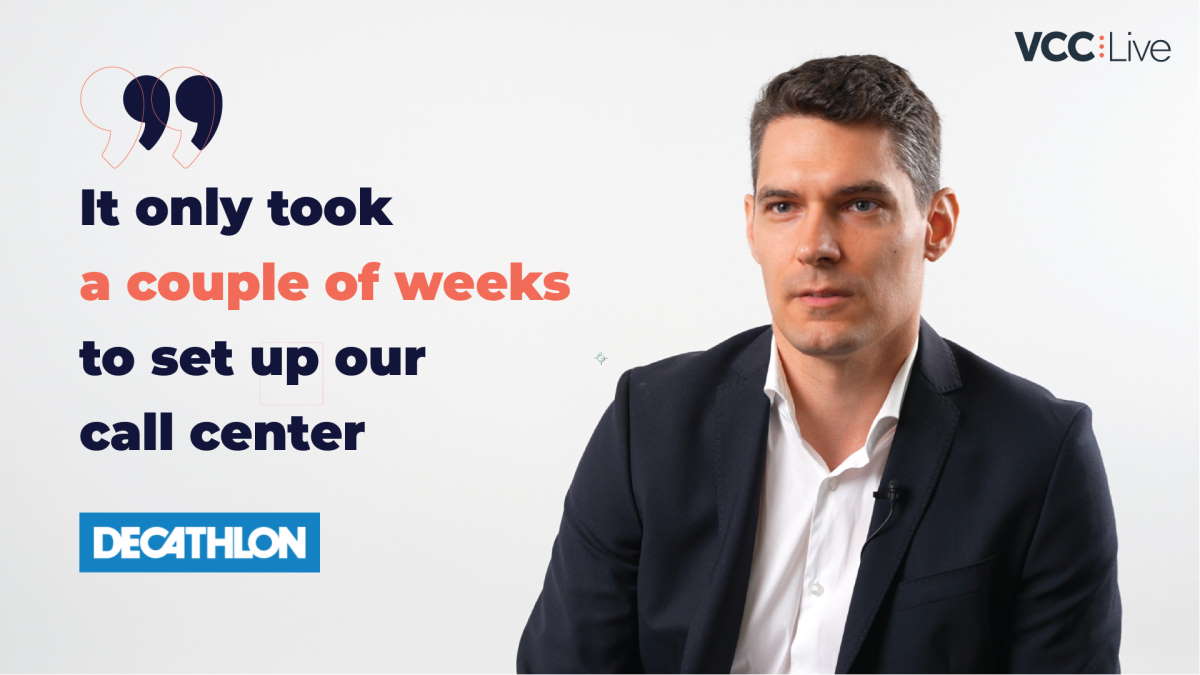
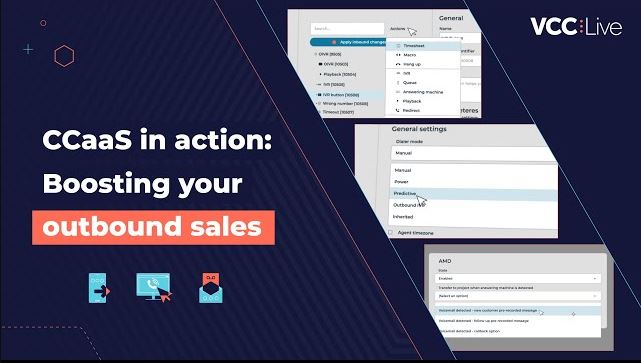
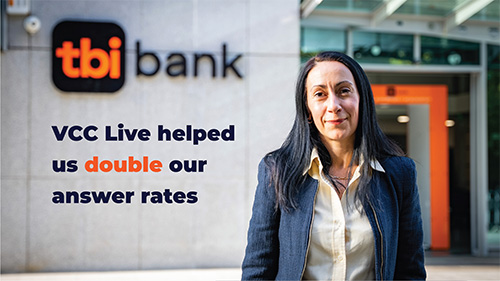
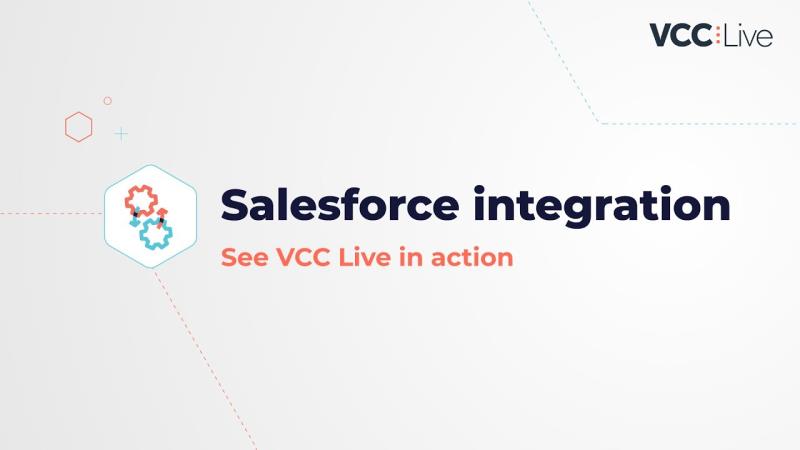
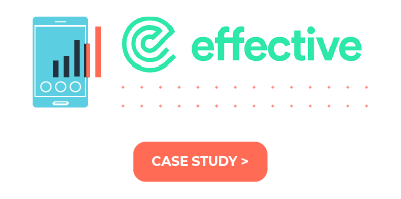
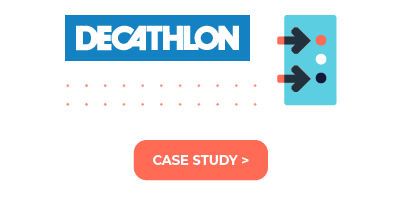
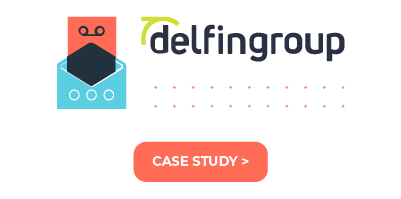
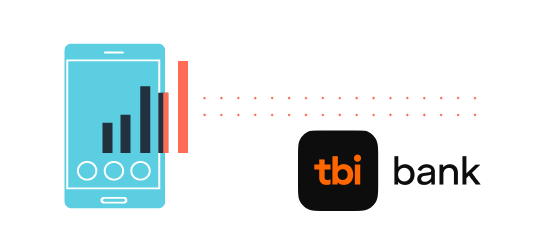

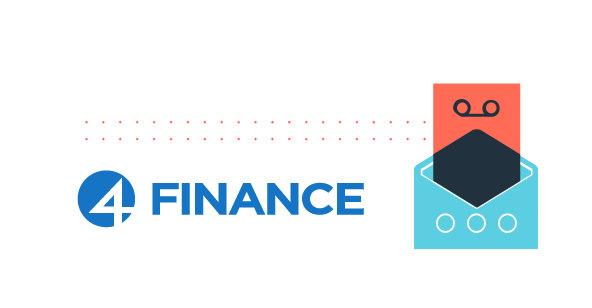

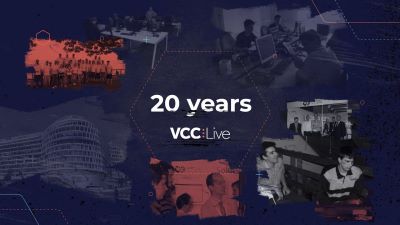
Comments
Can’t find what you need? Use the comment section below to connect with others, get answers from our experts, or share your ideas with us.
There are no comments yet.